
Delphi, in legend previously called Pytho (Πυθώ), was an ancient sacred precinct and the seat of Pythia, the major oracle who was consulted about important decisions throughout the ancient classical world. The ancient Greeks considered the centre of the world to be in Delphi, marked by the stone monument known as the Omphalos of Delphi (navel).
An omphalos is a religious stone artefact. In Ancient Greek, the word ὀμφᾰλός means "navel". Among the Ancient Greeks, it was a widespread belief that Delphi was the center of the world. According to the myths regarding the founding of the Delphic Oracle, Zeus, in his attempt to locate the center of the Earth, launched two eagles from the two ends of the world, and the eagles, starting simultaneously and flying at equal speed, crossed their paths above the area of Delphi, and so was the place where Zeus placed the stone.

In Greek mythology, Amalthea or Amaltheia is the most-frequently mentioned foster-mother of Zeus.
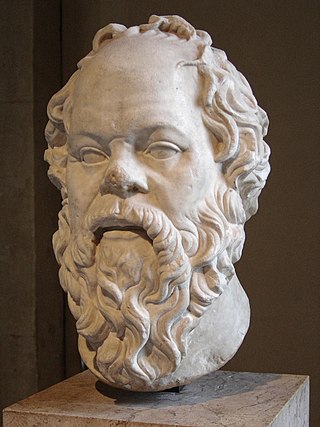
Year 470 BC was a year of the pre-Julian Roman calendar. At the time, it was known as the Year of the Consulship of Potitus and Mamercus. The denomination 470 BC for this year has been used since the early medieval period, when the Anno Domini calendar era became the prevalent method in Europe for naming years.
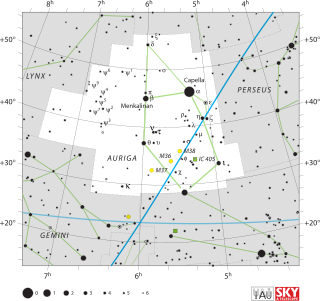
Auriga is a constellation in the northern celestial hemisphere. It is one of the 88 modern constellations; it was among the 48 constellations listed by the 2nd-century astronomer Ptolemy. Its name is Latin for '(the) charioteer', associating it with various mythological beings, including Erichthonius and Myrtilus. Auriga is most prominent during winter evenings in the northern Hemisphere, as are five other constellations that have stars in the Winter Hexagon asterism. Because of its northern declination, Auriga is only visible in its entirety as far south as -34°; for observers farther south it lies partially or fully below the horizon. A large constellation, with an area of 657 square degrees, it is half the size of the largest, Hydra.
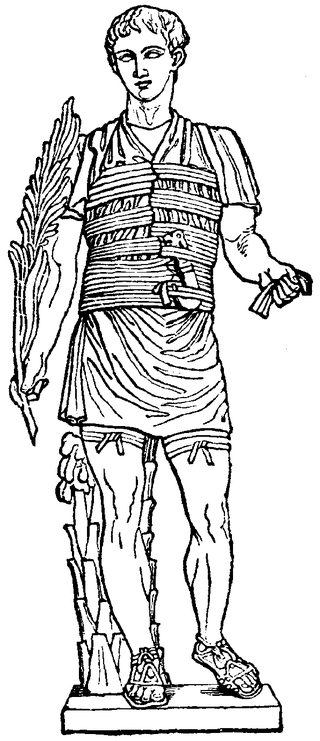
An auriga was an enslaved person who drove vehicles in the Roman circuses. The position of auriga was a dangerous one as the aurigae drove with the reins wrapped around his waist. In case of accident, the auriga also wore a curved knife (falx) stuck in the waistband.

Alien Resurrection is a 1997 American science fiction horror film, directed by Jean-Pierre Jeunet, written by Joss Whedon, and starring Sigourney Weaver and Winona Ryder. It is the fourth installment of the Alien franchise, and was filmed at the 20th Century Fox studios in Los Angeles, California.

Delphi is a general-purpose programming language and a software product that uses the Delphi dialect of the Object Pascal programming language and provides an integrated development environment (IDE) for rapid application development of desktop, mobile, web, and console software, currently developed and maintained by Embarcadero Technologies.
A charioteer is someone who drives one or a team of horses or other equines from a drawn chariot.

The Charioteer of Delphi, also known as Heniokhos, is a statue surviving from Ancient Greece, and an example of ancient bronze sculpture. The life-size (1.8m) statue of a chariot driver was found in 1896 at the Sanctuary of Apollo in Delphi. It is now in the Delphi Archaeological Museum.
Below are notable events in archaeology that occurred in 1896.

A chiton is a form of tunic that fastens at the shoulder, worn by men and women of ancient Greece and Rome. There are two forms of chiton: the Doric and the later Ionic. According to Herodotus, popular legend was that Athenian women began to wear the chiton as opposed to the peplos after several women stabbed a messenger to death with the bronze pins characteristic of the peplos.

The Temple of Apollo, also known as Apollonion, was a major part of the Panhellenic religious sanctuary located in Central Greece at Delphi. The temple and sanctuary at large were dedicated to one of the major Greek deities, Apollo, the god of archery, music, light, prophecy, the arts, and healing. There have been several temples built at Delphi throughout the history of the site, though the visible ruins seen in modernity are those of the temple built in the 4th century B.C.E. before its destruction under the orders of Theodosius I in 390 C.E.. During antiquity, the temple was home to the famous Greek prophetess the Pythia, or the Oracle of Delphi, making the Temple of Apollo and the sanctuary at Delphi a major Panhellenic religious site as early as the 8th century B.C.E., and a place of great importance at many different periods of ancient Greek history. References to Delphi, the sanctuary, the temple, and the prophecies of the Pythia are made throughout ancient Greek mythology and historical accounts from the periods of its use.

Delphi Archaeological museum is one of the principal museums of Greece and one of the most visited. It is operated by the Greek Ministry of Culture. Founded in 1903, it has been rearranged several times and houses the discoveries made at the Panhellenic sanctuary of Delphi, which date from the Late Helladic (Mycenean) period to the early Byzantine era.

USS Auriga (AK-98) was an Auriga-class cargo ship, the only ship in her class, commissioned by the U.S. Navy for service in World War II, named after the constellation Auriga. She was responsible for delivering troops, goods and equipment to locations in the war zone.
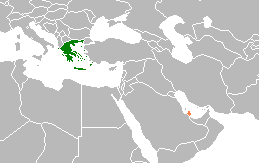
Greece–Qatar relations are the bilateral relations between Greece and Qatar. Relations were established in 1973.
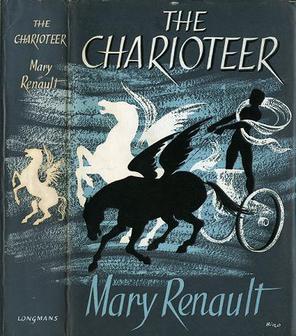
The Charioteer is a war novel by Mary Renault first published in London in 1953. Renault's US publisher (Morrow) refused to publish it until 1959, after a revision of the text, due to its generally positive portrayal of homosexuality. The Charioteer is significant because it features a prominent – and positive – gay theme at an early date and quickly became a bestseller – particularly within the gay community.
The modern constellation Auriga lies across two of the quadrants symbolized by the White Tiger of the West and the Vermillion Bird of the South, and Three Enclosures, that divide the sky in traditional Chinese uranography.

Auriga was a Hansa A Type cargo ship which was built as Adamsturm in 1944 by Deutsche Werft, Hamburg, Germany for Deutsche Dampfschifffarts-Gesellschaft Hansa, Bremen Germany. She was seized as a prize of war in 1945, passing to the Ministry of War Transport and renamed Empire Gantry. She was sold in 1947 and was renamed Baltanglia. She was renamed Baltic Pine in 1952. Sold to Greece in 1954, and renamed Germania, she was declared a constructive total loss following a collision in 1955. Sold to Germany, she was repaired and renamed Auriga. She served until 1965, when she was scrapped.
A number of steamships were named Auriga, including:














